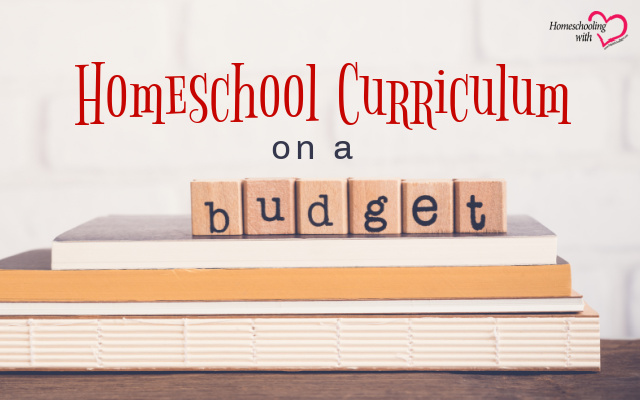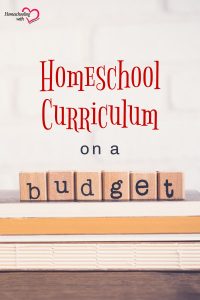Homeschool Curriculum On A Budget


When I tell people I homeschool my children, they usually ask questions. One question that almost always comes up is about curriculum. They want to know what I use to teach my kids. It’s understandable. In the traditional school model, the school chooses the curriculum and often supplies the course materials to the students. It’s not unusual to wonder what homeschoolers use for curriculum. Although homeschool regulations regarding curriculum are not the same everywhere, where I live homeschool teachers choose their own curriculum. When I tell people I am responsible for getting the curriculum we use in our homeschool, they usually ask about cost. Sometimes they assume homeschooling must be expensive. It’s not, at least not the way I do it.
There are various ways to acquire homeschool curriculum on a budget. Homeschooling curriculum doesn’t have to be expensive. That’s not to say that homeschooling curriculum can’t be expensive. It absolutely can be. It all depends on how you homeschool and how you choose curriculum. Here’s how to keep the costs low.
First, think about the big picture goals for your homeschool. What do you want your kids to learn? What subjects will they study? Once you have the general goals figured out, narrow down your focus. Make a list of the specific topics and skills you want them to work on. If you aren’t sure what topics and skills to focus on, you can refer to your state’s curriculum guidelines for suggestions or ask fellow homeschoolers for ideas.
Second, research the retail market. This is the part that gets expensive for some. Don’t just buy a curriculum at full retail price without thorough research about alternatives. Just because your friend used a certain curriculum with her child, that doesn’t mean it’s appropriate for yours. Likewise, just because an advertisement suggested you needed a particular book, that doesn’t mean you should immediately buy it. Look at your list of topics and skills and then look online to see what is available that correlates with your list. Read reviews and research prices, but don’t buy anything yet.
Third, explore your library. If I added up the retail cost of the many books, CDs, videos, and other materials I have borrowed from our library system to use in our homeschool over the years, I’m certain it would be thousands of dollars. If your library has an online catalog and an interlibrary loan system, then you likely have access to a wealth of homeschooling material for free. If you haven’t investigated your library recently, then you may not even realize how many resources are there. When my children were younger, I used a unity study approach for their schooling. There is no way that I would have been able to purchase all the great materials that we used for these unit studies. As my kids entered their high school years, I borrowed college textbooks through our library system for some of their classes. Use your library’s online catalog to search for books and other resources that match your list of topics and skills. You may not find the same retail resources that you’ve already identified, but there will probably be suitable substitutes. Similarly, you may not find one book that has everything you’re looking for, but you don’t need to limit yourself to one book. Once you find some resources that look promising, make another list. Our library’s online catalog has a “favorites” feature that I’ve used for making these types of lists.
Fourth, research what to purchase. Once you’ve explored your library and retail options, it’s time to narrow down what you want to use for curriculum. Even if you’ve picked out a particular book or series of books that you want to use, don’t purchase them from the retailer just yet. First, explore other options. Homeschoolers often pass on, or sell, curriculum that they’ve used to other homeschoolers. If you’re in a homeschool group, either in person or online, ask others if they have what you are looking for and if they are planning to part with it. If no one has what you want, research the online resale market. Many people sell preowned books and materials online, and you may find what you’re looking for at a significantly reduced price. Keep in mind that publishers often update curriculum without changing much of the actual content. Just because a book has an older copyright date doesn’t mean the material is not worthwhile. You can save a great deal on the cost of homeschool curriculum by not purchasing the most recent update.
Last, make retail purchases. Hopefully, you will get most, if not all, of your curriculum by other means. If you can’t, then it’s time to purchase it new. Remember, you are not limited to purchasing directly from the publisher. Many online stores sell homeschool curriculum. Compare prices, look for coupon codes, and shop through a shopping portal if possible. Every cent matters when you are purchasing homeschool curriculum on a budget. It doesn’t have to break the bank. Explore your options to find an economical solution that works best for you.
Heidi Kinney is a freelance writer from Massachusetts. She has been homeschooling her children since 2007. She shares homeschool resources and lessons at SharedLessons.org, and inspiration for runners at WhySheRuns.com.













































